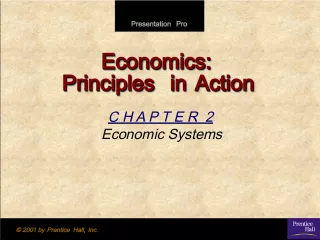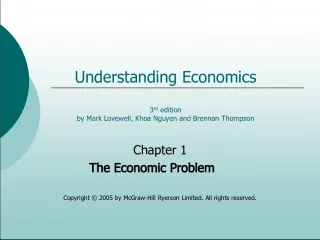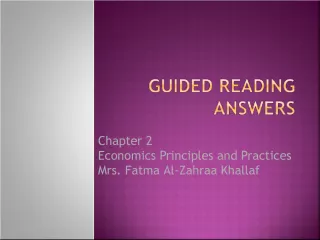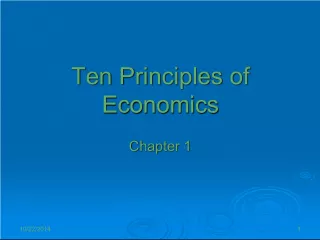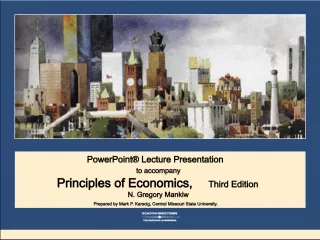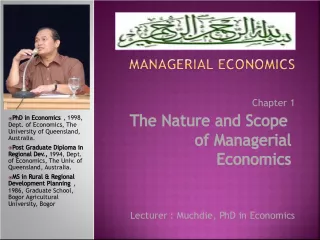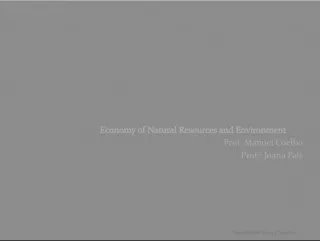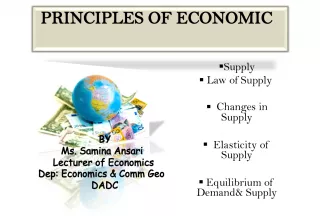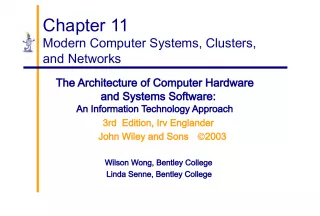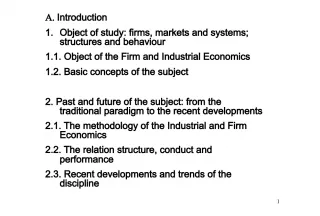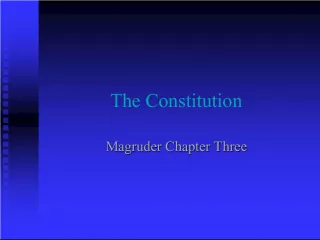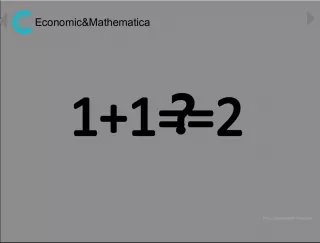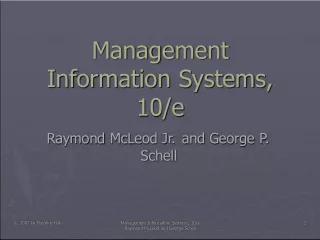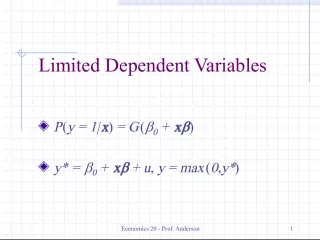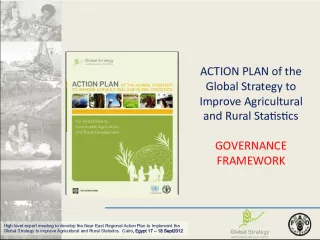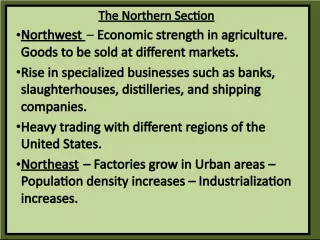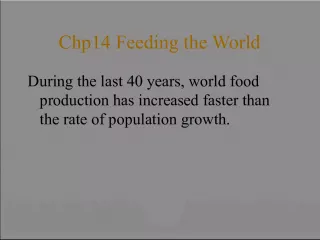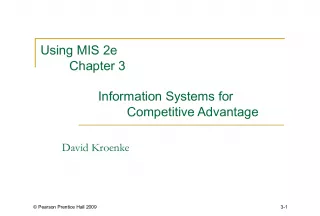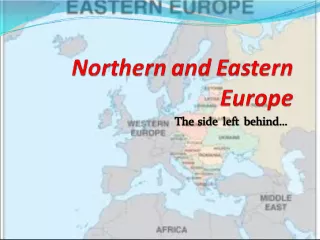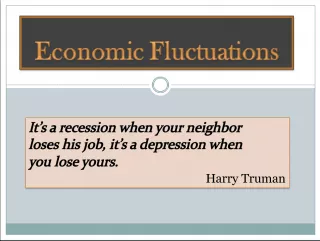Economics Principles in Action: Chapter 2 - Economic Systems
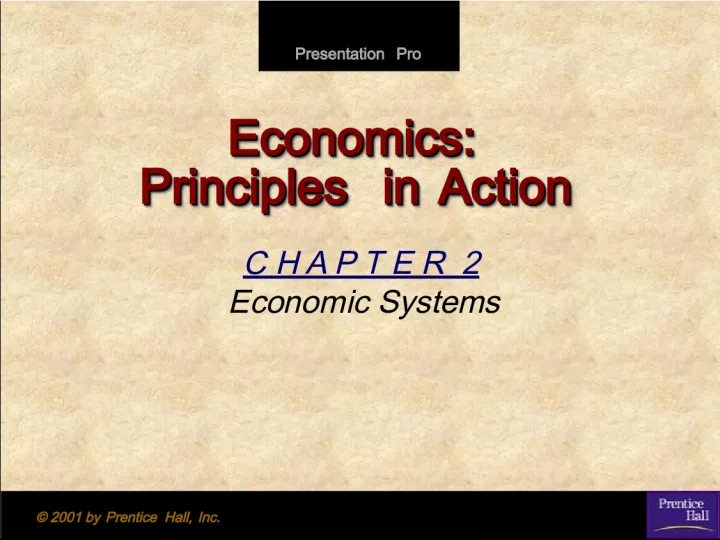

This presentation, created by Prentice Hall Inc in 2001, explores the topic of economic systems. The chapter begins with an overview of the four economic questions that
- Uploaded on | 3 Views
-
 florencekennedy
florencekennedy
About Economics Principles in Action: Chapter 2 - Economic Systems
PowerPoint presentation about 'Economics Principles in Action: Chapter 2 - Economic Systems'. This presentation describes the topic on This presentation, created by Prentice Hall Inc in 2001, explores the topic of economic systems. The chapter begins with an overview of the four economic questions that. The key topics included in this slideshow are . Download this presentation absolutely free.
Presentation Transcript
Slide1Presentation Pro Presentation Pro © 2001 by Prentice Hall, Inc. © 2001 by Prentice Hall, Inc. Economics: Principles in Action Economics: Principles in Action Economics: Principles in Action Economics: Principles in Action C H A P T E R 2 Economic Systems
Slide211 2 2 3 3 Go To Section: Go To Section: 4 4 Every society must answer four questions: The Four Economic Questions The Four Economic Questions • What goods and services should be produced? • How should these goods and services be produced? • Who produces these goods and services? • For whom are the goods & services produced? Chapter 2, Section 1 Chapter 2, Section 1 2 2 3 3 4 4
Slide311 2 2 3 3 Go To Section: Go To Section: 4 4 Economic Goals Economic Goals Societies answer the four economic questions based on their values. Chapter 2, Section 1 Chapter 2, Section 1 Economic Goals Making the most of resources Economic efficiency Freedom from government intervention in the production and distribution of goods and services Economic freedom Assurance that goods and services will be available, payments will be made on time, and a safety net will protect individuals in times of economic disaster Economic security and predictability Fair distribution of wealth Economic equity Innovation leads to economic growth, and economic growth leads to a higher standard of living. Economic growth and innovation Societies pursue additional goals, such as environmental protection. Other goals 2 2 3 3 4 4
Slide411 2 2 3 3 Go To Section: Go To Section: 4 4 Four Economic Systems Four Economic Systems Chapter 2, Section 1 Chapter 2, Section 1 An economic system is the method used by a society to produce and distribute goods and services. 2 2 3 3 4 4
Slide511 2 2 3 3 Go To Section: Go To Section: 4 4 Why Do Markets Exist? Why Do Markets Exist? Markets exist because none of us produce all the goods and services we require to satisfy our needs and wants. Chapter 2, Section 2 Chapter 2, Section 2 A market is an arrangement that allows buyers and sellers to exchange goods and services. Voluntary Exchange is when buyers & sellers are free to negotiate the conditions of a sale/purchase. Needed for markets to be free. 3 3 4 4 1 1
Slide611 2 2 3 3 Go To Section: Go To Section: 4 4 Product market Factor market The Free Market Economy The Free Market Economy In a free market economy, households and business firms use markets to exchange money and products. Households own the factors of production and consume goods and services. Chapter 2, Section 2 Chapter 2, Section 2 Households pay firms for goods and services. Firms supply households with goods and services. Households supply firms with land, labor, and capital. Firms pay households for land, labor, and capital. 3 3 4 4 1 1
Slide711 2 2 3 3 Go To Section: Go To Section: 4 4 The Market’s Self-Regulating Nature The Ideas Of Adam Smith The Market’s Self-Regulating Nature The Ideas Of Adam Smith • In every transaction, the buyer and seller consider only their self- interest , or their own personal gain. Self-interest is the motivating force in the free market. • Producers in a free market struggle for the dollars of consumers. This is known as competition , and is the regulating force of the free market. • The interaction of buyers and sellers, motivated by self-interest and regulated by competition, all happens without a central plan. This phenomenon is called “the invisible hand of the marketplace.” • Adam Smith advocated a “ laissez faire ” approach to economics, meaning that there was no need for government intervention in the economy since it was self regulating. • Through specialization and a division of labor societies could maximize their resources. Chapter 2, Section 2 Chapter 2, Section 2 3 3 4 4 1 1
Slide811 2 2 3 3 Go To Section: Go To Section: 4 4 Advantages of the Free Market Advantages of the Free Market Chapter 2, Section 2 Chapter 2, Section 2 3 3 4 4 1 1
Slide911 2 2 3 3 Go To Section: Go To Section: 4 4 Characteristics of a Free Market Characteristics of a Free Market • Competition & Self Interest • Private Property • Free Enterprise • Freedom of Choice • Laissez Faire
Slide1011 2 2 3 3 Go To Section: Go To Section: 4 4 How Free Markets Answer the Four Questions How Free Markets Answer the Four Questions • What? - answered by consumer sovereignty [when consumer wants dictate the types of products produced] and profit incentive . • Who? - profit incentive and competition. • How? - profit incentive…lowest possible cost with the maximum profit • For Whom? - profits and income
Slide1111 2 2 3 3 Go To Section: Go To Section: 4 4 Organization of Centrally Planned Economies Organization of Centrally Planned Economies In a centrally planned economy, the government owns both land and capital. The government decides what to produce, how much to produce, and how much to charge. Chapter 2, Section 3 Chapter 2, Section 3 Socialism is a social and political philosophy based on the belief that democratic means should be used to distribute wealth evenly throughout a society. Communism is a political system characterized by a centrally planned economy with all economic and political power resting in the hands of the government. Originated with the ideas of Karl Marx. 2 2 4 4 1 1
Slide1211 2 2 3 3 Go To Section: Go To Section: 4 4 Why Communism Failed in the Former Soviet Union Why Communism Failed in the Former Soviet Union 1. No Incentives 2. Inefficient Decision Making 3. Price controls Soviet Agriculture In the Soviet Union, the government created large state-owned farms and collectives for most of the country’s agricultural production. These farms were inefficient because people lacked incentives. Regardless of what people made the government took it. Experiments with allowing farmers keep a portion of their produce saw dramatic improvements in productivity. Soviet Industry Soviet planners favored heavy-industry production (such as steel and machinery), over the production of consumer goods. Communist Inefficiency also led to environmental disasters like the Aral Sea. Chapter 2, Section 3 Chapter 2, Section 3 2 2 4 4 1 1
Slide1311 2 2 3 3 Go To Section: Go To Section: 4 4 Problems of a Centrally Planned Economy Problems of a Centrally Planned Economy Centrally planned economies face problems of poor- quality goods, shortages, and diminishing production. Chapter 2, Section 3 Chapter 2, Section 3 2 2 4 4 1 1 • East German Trabant automobile
Slide1411 2 2 3 3 Go To Section: Go To Section: 4 4 The Rise of Mixed Economies The Rise of Mixed Economies Market economies, with all their advantages, have certain drawbacks. Chapter 2, Section 4 Chapter 2, Section 4 Limits of Laissez Faire Limits of Laissez Faire Laissez faire is the doctrine that government generally should not interfere in the marketplace. Governments create laws protecting property rights and enforcing contracts. They also encourage innovation through patent laws. 2 2 3 3 1 1
Slide1511 2 2 3 3 Go To Section: Go To Section: 4 4 Government’s Role in a Mixed Economy Government’s Role in a Mixed Economy In a mixed economy, Chapter 2, Section 4 Chapter 2, Section 4 2 2 3 3 1 1 Product market • the government purchases goods and services in the product market, and Factor market • purchases land, labor, and capital from households in the factor market.
Slide1611 2 2 3 3 Go To Section: Go To Section: 4 4 Comparing Mixed Economies Comparing Mixed Economies Chapter 2, Section 4 Chapter 2, Section 4 An economic system that permits the conduct of business with minimal government intervention is called free enterprise . The degree of government involvement in the economy varies among nations. Continuum of Mixed Economies Centrally planned Free market Source: 1999 Index of Economic Freedom , Bryan T. Johnson, Kim R. Holmes, and Melanie Kirkpatrick Iran North Korea Cuba China Russia Greece Peru United States South Africa France United Kingdom Botswana Canada Singapore Hong Kong 2 2 3 3 1 1
